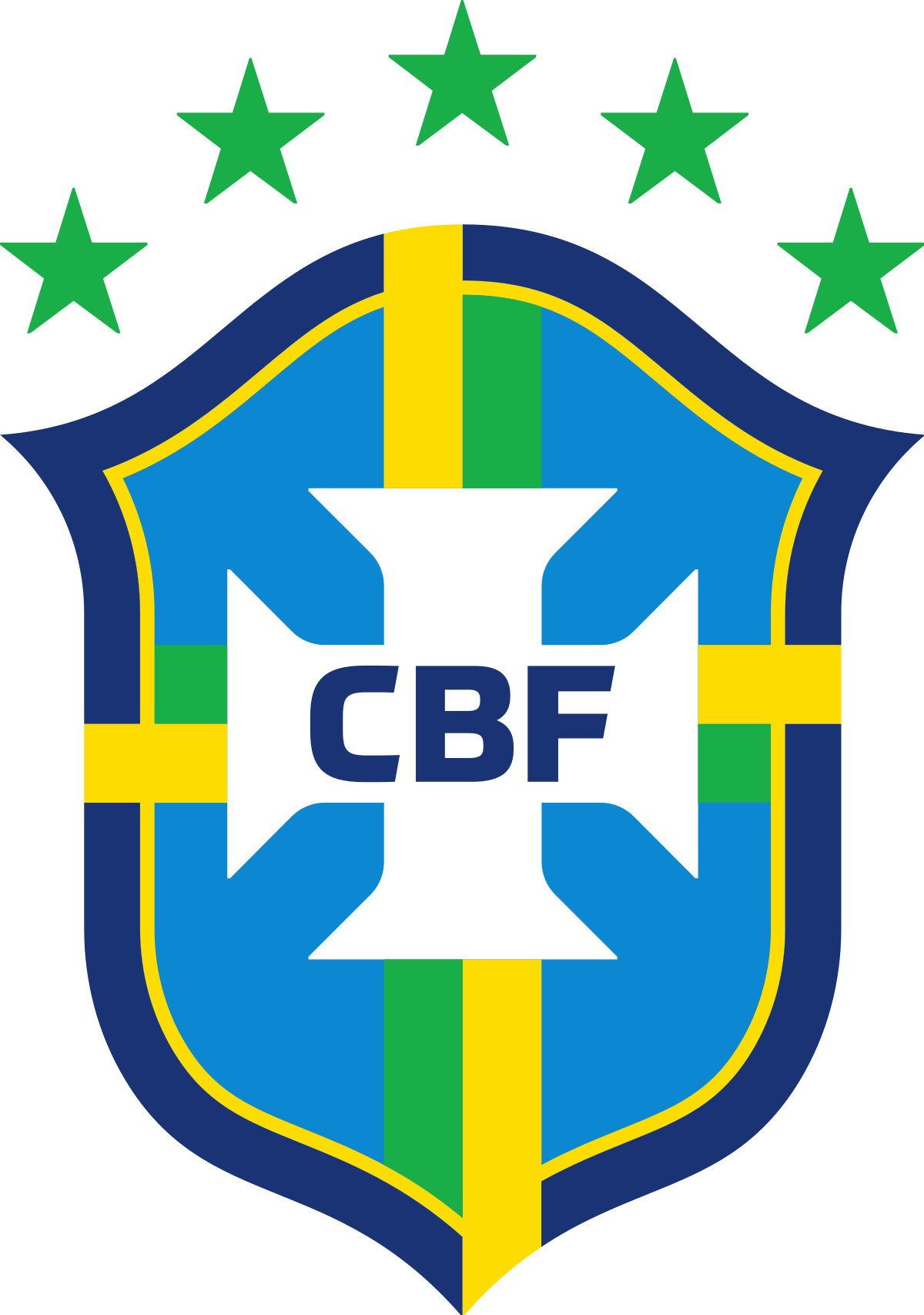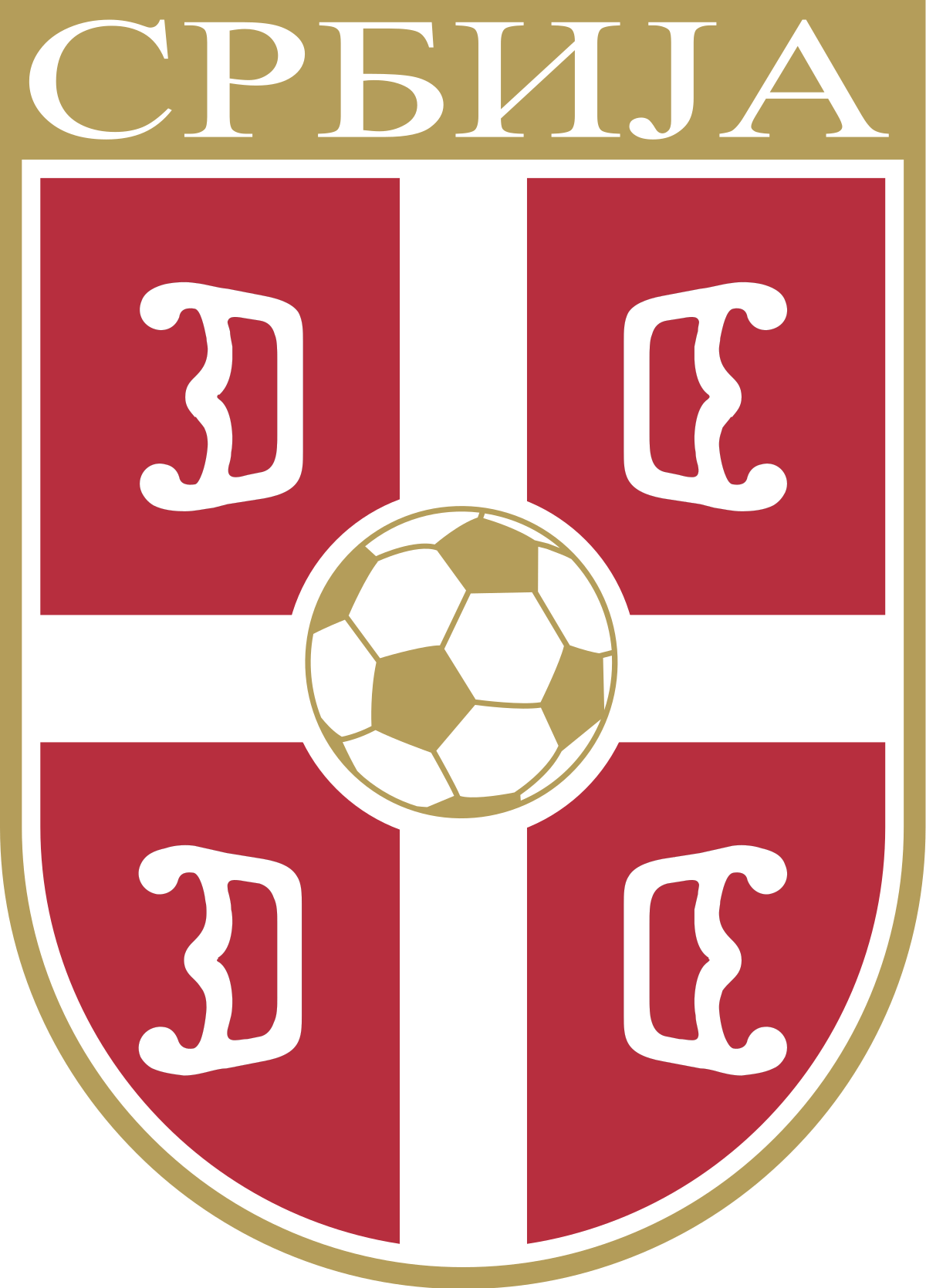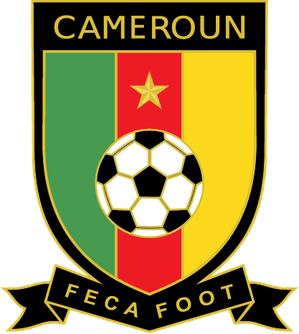
Brazil
(A Seleção)
Champions: 5 (1958, 1962, 1970, 1994, 2002)
Runners Up: 2 (1950, 1998)
Third Place: 2 (1938, 1978)
Fourth Place: 2 (1974, 2014)
Quarter Finalists: 5 (1954, 1986, 2006, 2010, 2018)
Round of 16: 2 (1934, 1990)
Second Round: 1 (1982)
Group Stage: 2 (1930, 1966)
Current FIFA Ranking: 1
Neymar
Read More
Vinicius Junior
Read More
Casemiro
Read More
Tite
Read More
Group C Schedule
Game 1 – Thursday 24th November 2022

Serbia
Game 2 – Monday 28th November 2022

Switzerland
Game 3 – Friday 2nd December 2022

Cameroon
Notable Honours
Brazil are arguably the most outstanding international team of all time, rivalled only by Germany. Winning a record 5 World Cups (1958, 1962, 1970, 1994, 2002) and 9 Copa Americas, they also won the Confederations Cup a record four times (1997, 2005, 2009, 2013).
Beginnings
Widely considered the most iconic football nation, Brazilian football has embodied itself firmly in the public consciousness as Joga Bonito – the beautiful game. The national team has a long history. In 1919 and 1922 they won two editions of the Copa America (then known as the South American Championship) which was still in its infancy, led by star player Arthur Friedenreich. Friedenreich is believed to be the first exceptional mixed-race player in football history. They entered the inaugural World Cup in 1930 but experienced a slow start to their now-fabled World Cup story, being eliminated at the first hurdle. In 1934 they once more lost at the first stage. As the only South American entrants in France in 1938, they performed much better, reaching the semi-finals and being eliminated by defending and eventual champions Italy.
Disaster on Home Soil
In 1946 FIFA accepted Brazil’s bid to host the World Cup in 1950 following a twelve-year hiatus. Brazil again won the South American Championship in 1949, scoring 46 goals in 8 matches, which prompted excitement. As much of Europe lay in ruins following World War II, Brazil had an exciting, talented team comprising such players as maestro midfielder Zizinho and the goalscoring forward, Ademir. Indeed, Brazil blew the opposition away in 1950, highlights being a 4-0 win over Mexico and 7-1 and 6-1 victories over Sweden and Spain, respectively, and Ademir’s nine goals. The latter two wins had been in the final group, which took the form of the winner of the group winning the trophy. It meant a de facto final between Brazil and Uruguay, with Brazil only requiring a draw. An officially counted 173,850 people crammed into the Maracana in Rio de Janeiro to witness the match, though unofficially, the attendance is believed to be far higher. Regardless, it is a record attendance for a football match. The Brazilian people and media were highly confident of becoming world champions, believing it a foregone conclusion. However, things did not transpire as Brazil hoped. They took the lead just after half-time with a highly disputed goal, but Uruguay fought back to win 2-1. Much of the credit for this victory has been attributed to Uruguay captain Abdulio Varela, his speech in the dressing room before the match contradicting his coach’s desire to play defensively to have any chance. Uruguay were hence more expansive in their play. The event was dubbed the Maracanazo. In the aftermath, many fans committed suicide, goalkeeper Moacir Barbosa was ostracised and lived the remainder of his life in disgrace, and there was a collective shock around the country. Things were so drastic that Brazil changed the kit from white to its now-famous yellow, green and blue. It had been a sporting disaster or even more than that for many people.
Emergence and Dominance
1954 was unsuccessful for Brazil, too, being eliminated in the quarter-final. However, things were about to change. Brazil travelled to Sweden in 1958 rejuvenated, containing a squad full of highly talented players such as goalkeeper Gilmar, fullbacks Nilton Santos and Djalma Santos, midfielders Zito and the great Didi, and forwards Mario Zagallo and Vava. However, it was winger Garrincha and 17-year-old Pele – now considered two of the greatest players of all time, with many believing Pele the greatest – who stole the show. Garrincha was an extremely exciting winger who could beat players for fun. Considered to be one of the best dribblers in football history in spite of a congenital defect which rendered him bow-legged, he was also considered to be something of a character, and was even rumoured to have lost his virginity to a goat The two ran riot at the tournament, with Pele scoring six goals, including two in the final in a 5-2 rout of hosts Sweden (after the Swedes had taken the lead). Vava scored two, also. Brazil had in some way exorcised the ghost of 8 years previously and had become world champions for the first time and the first nation to win the tournament in a foreign continent.
In 1962, Brazil became the second team to successfully defend their title, after Italy (victors in 1934 and 1938). However, it was a tournament plagued by constant violence on the pitch, and Pele was injured in the second match vs Czechoslovakia. The tournament has become known as the Garrincha show – it is claimed that he and Argentina’s Diego Maradona in 1986 put in the most outstanding performances of any player in the history of the World Cup. Indeed, Garrincha had a ball, quite literally, by dribbling past player after player and scoring four goals in total across the quarter and semi-finals. Brazil won the final 3-1, again after trailing.
The Fall Before the Pride
In 1966, the tournament turned to Europe, being hosted in England. The team was marred by political strife and internal politics. They became the first defending champions to be eliminated in the group stage, with Pele again hacked to pieces. However, better lay in store at Mexico in 1970, where Brazil won their third World Cup and, as a result, were allowed to keep the Jules Rimet trophy. This squad has become known as one of the greatest teams of all time, club or country. Pele was in his prime and was deployed as a playmaker in the number 10 role. Surrounded by fantastic players such as Carlos Alberto, Clodoaldo, Gerson, Rivelino, Tostao and Jairzinho (who scored in all six matches), the Brazilians enthralled the world, culminating in a 4-1 demolition of Italy in the final at the Azteca. Enduring memories of Pele’s tournament are him almost scoring from the halfway line against Czechoslovakia and bamboozling the Uruguayan goalkeeper but missing his shot. There was also his saved header from Gordon Banks against England and his wonderfully weighted pass into Carlos Alberto’s path for the fourth in the final, which has since been described as one of the most incredible team goals of all time. Incidentally, this goal also included an excellent dribble by Clodoaldo. Indeed, the Brazil side of 1970 is perhaps the most outstanding team in history.
Spectacular Failures
By 1974, however, Pele had retired from the team, and Netherlands’ Total Football was in vogue. Brazil finished fourth, being unsuccessful in their title defence. 1978 was also disappointing, with Argentina’s highly politically charged tournament viewed as sabotaging the Brazilians. However, they finished third, as bitter rivals and tournament hosts Argentina triumphed. In 1982, Brazil had a new team with fascinating talents, such as Falcao, Socrates, Eder and talisman Zico (known as the White Pele). They played beautiful football, scoring ten goals in the first group stage and then beating Argentina in the first game of the three-team second group stage. However, a Paolo Rossi hat trick for a defensive Italian team eliminated Brazil. The 1982 side is now known as one of the best teams to never win the World Cup, alongside Hungary’s Magical Magyars of 1954 and Rinus Michels’s and Johan Cruyff’s aforementioned Netherlands Total Football side in 1974. By 1986 the team was considered to be ageing, but Brazil won their first four games without conceding a goal. In a classic game, they then lost on penalties to France and Michel Platini in the quarter-final. However, three years later, Brazil won the 1989 Copa America, breaking their 40-year wait for the South American continental title.
Substance Over Style
At Italia ‘90, the seeds were planted whereby Brazil would become more defensive and organised, as they lacked creativity at the tournament. Claudio Taffarel, Branco, Dunga and Antonio Careca were all highly talented players, but they could not prevent an exit in the round of 16 to Argentina. Brazil were on the rise again, though, thanks to the more pragmatic tactics that they had incorporated. They won USA ’94, under coach Carlos Alberto Parreira with strikers Romario and Bebeto starring, scoring eight goals between them, and Romario winning the Golden Ball for the tournament’s best player. However, Parreira owed as much to the resilient defensive displays from Jorginho, Marcio Santos, Mazinho and Dunga as he did to the clinical strikeforce. Brazil then won the 1997 and 1999 Copa Americas, but it was in France ’98 that it got complicated. They did well throughout the tournament, led by Dunga again, star attacking midfielder Rivaldo and prodigious 21-year-old striker Ronaldo, aka Fenomeno. Ronaldo was already seen as the greatest player in the world and the heir to Pele. However, tragedy struck as he suffered a convulsion during the night on the eve of the final in Paris. With Ronaldo insistent upon playing, tensions were to divide the camp as some team members supported his selection while others were against his inclusion. Wandering around in a daze during the final, Brazil suffered a comprehensive 3-0 defeat to hosts France, who were spurred on by two headers from inspirational captain Zinedine Zidane.
The Four R’s – Rivaldo, Ronaldinho, Ronaldo’s Revenge
Brazil returned in 2002, and Ronaldo exorcised his demons with two goals in the final against Germany and eight goals overall. An attacking trident of ‘the three Rs’ – Ronaldo, Rivaldo and the new kid on the block, the incredible and enigmatic Ronaldinho – was supplemented by arguably the best attack-minded fullbacks of that era in Roberto Carlos and Cafu. However, Gilberto Silva’s defensive acumen provided much-needed stability in midfield, and Brazil played cautiously often. Some may say that two World Cups and three finals in just eight years vindicated the more pragmatic approach, to the chagrin of the purists. The following two editions were mediocre by Brazil’s standards, despite their exciting ‘magic square’ of Adriano, Kaka, Ronaldinho and Ronaldo in 2006. The pressure to include all four maverick players perhaps went against Parreira’s more defensive instincts.
Mineirazo
In 2014, Brazil were the host for the second time and the favourite. However, all this tournament is now remembered for in Brazil is the crushing 7-1 defeat by eventual winners Germany in the semi, with the Germans scoring four goals in the space of six insane minutes in the first half. Exciting new talent Neymar had been injured before the game, and defensive lynchpin Thiago Silva was suspended. However, it was still no excuse as the Brazilian players were accused of ‘cracking up’ and wilting under pressure. This event in Belo Horizonte has been dubbed Mineirazo, evoking painful memories of Maracanazo.
A Return to Prominence?
Following the 2014 debacle and failures in the 2015 and 2016 Copa America tournaments, expectations were somewhat tempered heading into 2018. It is fair to say that recent Brazilian sides have generally failed to live up to expectations. Three quarter-final exits sandwiched to strong European nations in France, Netherlands and Belgium sandwiched Mineirazo. Following an upturn in form, which has resulted in the team reaching two consecutive Copa America finals, including lifting the trophy for the 9th time in 2019 and also regaining a FIFA world number 1 ranking, Brazil will fancy their chances of ending their World Cup drought of two decades. However, the debate about whether they should entertain or be more pragmatic continues. The more conservative style has become characteristic of Brazilian football in modern times, despite the attacking prowess and sheer quantity and quality of enviable talent at their disposal. The failure of the 1982 side ignited a debate which has been raging for forty years regarding style versus substance. Brazilians hotly contest it since many believe that winning without style is not really winning.
Road to Qualification
Group Position: 1st
Record: Played: 17 W:14 D:3 L:0 F:40 A:5 GD:+35 Points:45
Date of Qualification: 11th November 2021
The Brazilians cruised through qualification, winning their first nine games and barely conceding a goal until a goalless draw in Colombia in their tenth game a year into the campaign. After this, they won five and drew two of their last seven games. Particular highlights were home destructions of Uruguay, Chile, Paraguay and Bolivia, with fellow qualifiers Uruguay’s Luis Suarez registering the only goal the Brazilians conceded at home. A lowlight came when they played Argentina at home on 5 September 2021. The match was abandoned after only 5 minutes when Argentina left the field because Brazilian health officials entered the pitch demanding the isolation of four Argentine players accused of violating the COVID quarantine rules. The game was later cancelled, despite the rivalry being a huge money spinner. This oddity aside, Brazil scored forty goals over their seventeen games – an average of 2.4 per match – and conceded only five. Neymar and Richarlison were their highest scorers in qualifying, with eight and six goals, respectively. Brazil had been easily the most impressive side in what is probably the toughest confederation to qualify from, and this is evidence of the threat they will pose in Qatar, though they will be missing their strength on home soil.
Meet the Coach: Tite (age 61)
A midfielder who spent most of his career in his homeland at Caxias, Tite never achieved anything substantial and was forced to retire aged 27 due to successive knee injuries. He started coaching in 1990, being nomadic for most of the nineties, but regional success with old club Caxias in 1999 and 2000 led to him being hired by Gremio. In 2002 Gremio finished third in both the Brazilian Serie A and the Copa Libertadores, but Tite left in 2003. He later coached some more Brazilian clubs and Al Ain in the United Arab Emirates. After this, he took over Internacional in Brazil again and led the club to the 2008 Copa Sudamericana. Things turned sour, and he was fired in October 2009. In 2010 he took over Corinthians, where he had by far his most tremendous success yet, winning the Brazilian Serie A in 2011 and the club’s first-ever Copa Libertadores in 2012. He followed this up by beating Chelsea in the 2012 FIFA Club World Cup. The following year saw a decline, and he left his post. However, after a brief sabbatical, he returned in 2015, winning the Brazilian title again.
In June 2016, Tite was named Brazil coach, replacing Brazilian playing legend Dunga. He and the national team sailed through qualifying for the 2018 edition. However, in Russia, they were eliminated in the quarter-finals by Belgium. The Brazilians believed this to represent an improvement over the 2014 performance. In 2019, the national team won the Copa America on home soil, impressing with good quality attacking play and defeating eternal rivals Argentina 2-0 en route to a 3-1 win over runners-up Peru in the final. However, two years later, the unthinkable happened when Brazil lost the 2021 Copa (also on home soil) to Argentina. Following the impressive qualifying campaign, Tite will travel to Qatar knowing he is stepping down from his post after the tournament. He will want to impress by playing his disciplined yet flexible and entertaining style and has a real chance of emerging triumphant in his final act as national coach.
Possible Starting XI and Style of Play

Tite can preside over an expansive brand of football, as evidenced by Brazil’s goal tally and attacking intent in many games during his tenure. He has, though, on many occasions, displayed no fear of reverting to a more pragmatic, defensive style of play which prioritises ball retention and taking fewer risks. Brazil’s tournament success will likely be predicated upon how well they can implement this more risk-averse style of football in the tournament’s latter stages. In goal, Liverpool’s Alisson is likely to start over his Manchester City rival Ederson, both being very adept with their feet, but Alisson is the more rounded goalkeeper. Eder Militao, nominally a centre-back, can fill in at right-back given his impressive Real Madrid performances, though Danilo or Dani Alves could provide a more natural fit. Alex Telles or Alex Sandro will play at left-back. The centre-back partnership is formed by the nigh-on impenetrable Marquinhos and Thiago Silva, with Arsenal’s Gabriel in reserve.
In midfield, the maligned Fred may form a solid anchor with his Manchester United clubmate, the versatile and experienced Casemiro, although the talented Lucas Paqueta has a chance of starting, too, if Tite wants to go more attacking. Fabinho does not seem favoured by Tite – many consider him a better player than Fred, but he is more defensive and has been in poor form for Liverpool recently. Indeed, the coach seems to prefer the Manchester United man. Bruno Guimaraes is a further option. The attack boasts perhaps the most ludicrous embarrassment of riches in the tournament, with the likes of Antony, Gabriel Martinelli, Gabriel Jesus, Raphinha, Rodrygo, and Richarlison all vying for places. We predict that Raphinha and, if he is fit, Richarlison will start the first match (though Antony might get the call ahead of the former on the right), to be joined by Vinicius Junior and talisman Neymar, who are nailed on starters. If Tite wants to be more defensive, he can play a third midfielder in place of Raphinha or Antony and play Neymar as a false 9. The insurance offered by the midfield base in allowing the front players to provide a creative yet tactically nimble threat cannot be underestimated. Many of the attacking talents are hugely versatile and can play anywhere along the front line, offering much variety. However, so much rests on Neymar’s shoulders. If Tite allows them to, Brazil may dazzle in Qatar. They will offer a blend of tactical discipline and attack-minded football, depending on the situation and strength of the opposition.
Squad List
Goalkeepers: Alisson, Ederson, Weverton.
Defenders: Dani Alves, Danilo, Alex Sandro, Alex Telles, Bremer, Eder Militao, Marquinhos, Thiago Silva.
Midfielders: Bruno Guimaraes, Casemiro, Everton Ribeiro, Fabinho, Fred, Lucas Paqueta.
Attackers: Antony, Gabriel Jesus, Gabriel Martinelli, Neymar, Pedro, Raphinha, Richarlison, Rodrygo, Vinicius Junior.
Key Players
Neymar
Date and Place of Birth: (05.02.1992, Mogi das Cruzes)
Current Club: Paris Saint-Germain
Caps/Goals: 121/75
Neymar is the maverick and ultimate genius of the squad. He can play anywhere along the forward line and as a central attacking midfielder when required and is as creative as he is clinical in front of goal. His prodigious ability with the ball at his feet, combined with superb vision, ensures that, at any given moment, he can be virtually unstoppable and create something from nothing. An unselfish player, Neymar’s willingness to turn provider will also be crucial for Brazil in the latter stages, in which they are expected to play with more pragmatism. He is one of the most technically gifted and entertaining players in the world, and Brazil are a significantly poorer team without him – he is that crucial.
Vinicius Junior
Date and Place of Birth: (12.07.2000, Sao Goncalo)
Current Club: Real Madrid
Caps/Goals: 16/1
Thought of as Neymar’s successor and always considered to be a hugely talented prospect in his own right, it is only during the last 12 months that Vinicius has made considerable strides in terms of his end product and ability to be decisive in games. This improvement was most notable through scoring the winner in May’s UEFA Champions League Final. Still young, his increased goal threat and improved decision-making ensure that in addition to being able to stretch defences with his frightening pace, Vinicius is the perfect foil for Neymar and will benefit hugely from the attention that Neymar attracts from opposition defences. Expect to see the likes of Vinicius, Gabriel Jesus, Antony, and of course Neymar himself, link up well and put on a show.
Casemiro
Date and Place of Birth: (23.02.1992, Sao Jose dos Campos)
Current Club: Manchester United
Caps/Goals: 65/5
A five-time UEFA Champions League winner with Real Madrid, Casemiro is steadily making his way into the Manchester United team following his summer transfer. He is the midfield lynchpin for the national side and is critical in ensuring that the ball reaches Brazil’s more creative players. His versatility and intelligence are fundamental in allowing Tite to adjust shape in-game as he can play further forward if required in what resembles a box-to-box role. Still, he can also become a third centre-back and is hugely proficient in stepping out of a back three, due to his tactical awareness and ability to read the game. Indeed, Tite prizes his experience and leadership, and he should be one of the first names on the team sheet.
